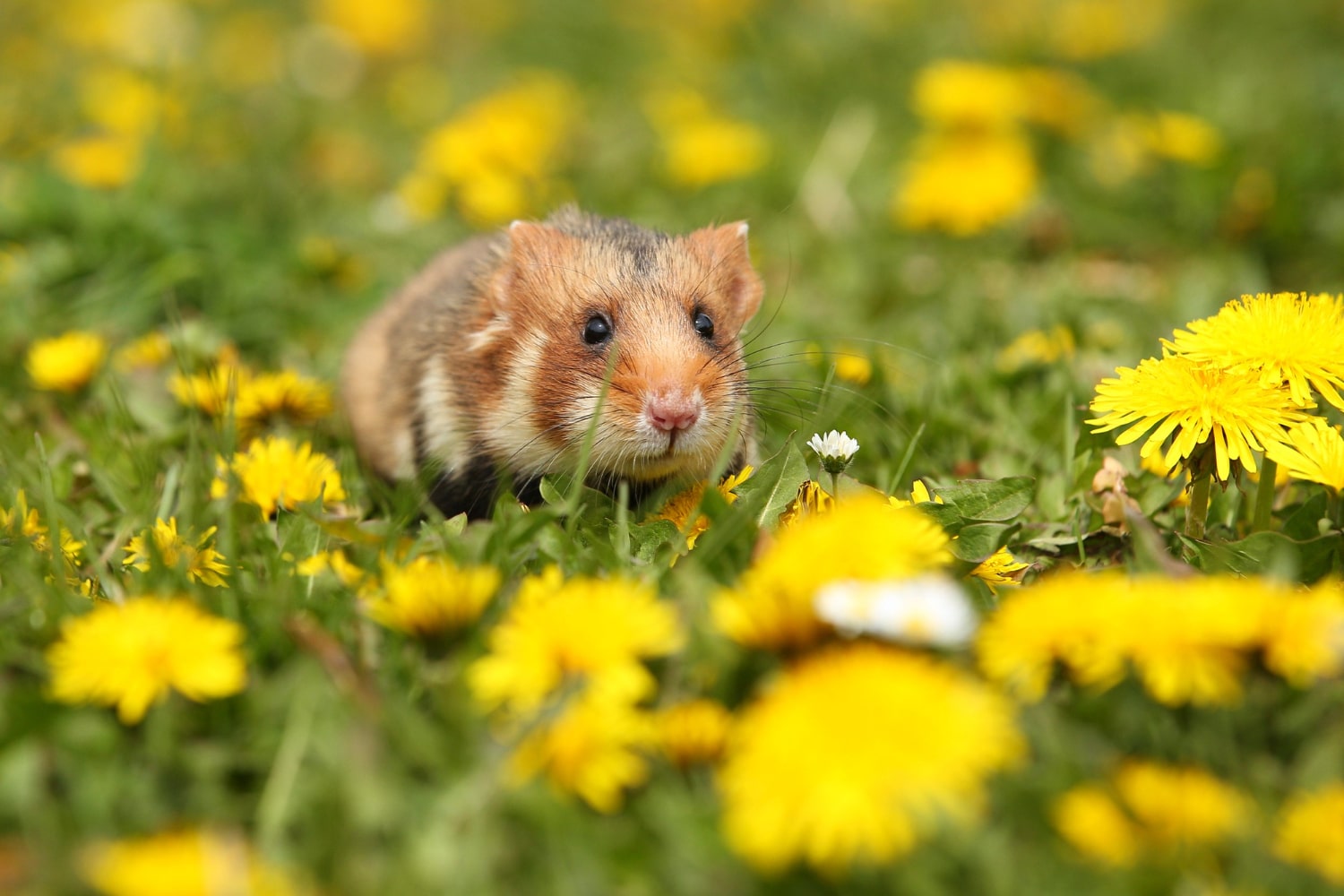Hamsters are small and charming rodents that have become beloved pets for children and adults around the world. Despite their tiny size, they possess complex behavior, fascinating biology, and impressive adaptability. In the wild, hamsters live in steppes, deserts, and mountains, while in homes they bring joy through their playful nature, energy, and amusing habits. Their world is much richer than it may seem at first glance. Here are interesting and educational facts about hamsters that you may not know.
- There are over 18 species of hamsters worldwide, divided into several genera. The most popular types include Syrian, Dzungarian, Campbell’s, and Chinese hamsters. Some are common household pets, while others live only in the wild. Each species has its own unique physical and behavioral traits.
- The first domesticated hamsters were bred from wild Syrian hamsters in the 1930s. They were originally captured near Aleppo in Syria and used for laboratory research. Eventually, they became popular pets around the world. Today’s Syrian hamsters are all descendants of just a few individuals.
- Hamsters have cheek pouches that allow them to store and transport food. In some species, these pouches extend all the way to the shoulders, making it easy to carry food long distances. This adaptation helps them store supplies in their burrows. When threatened, they can quickly empty the pouches by turning them inside out through the mouth.
- Most hamsters are nocturnal, meaning they are active at night and sleep during the day. This behavior is natural in their environment, where high daytime temperatures make movement risky. In captivity, they typically wake up in the evening and begin running or exploring. This rhythm should be considered when choosing a hamster as a pet for children.
- Hamsters are territorial animals, and many species do not tolerate others in their space. This is especially true for Syrian hamsters, which can become aggressive toward one another. They must be kept alone to avoid fights and injuries. In the wild, they also live solitary lives.
- Hamsters have a very well-developed sense of smell, which they use to locate food, recognize other hamsters, and navigate their surroundings. They leave scent trails to find their way back to their nests. Smell also helps them avoid danger. Of all their senses, smell is the strongest and most important.
- Hamsters have poor vision and cannot distinguish many colors. They rely more on touch, smell, and memory to navigate. Their long whiskers help them detect nearby objects and sense distance. Because of their weak eyesight, they can easily fall from heights, so they must be handled with care.
- In the wild, hamsters build complex burrow systems with tunnels and separate chambers. These chambers include areas for sleeping, storing food, and going to the toilet. This organized structure helps them stay safe and maintain hygiene. In captivity, they often mimic this behavior by digging in their bedding.
- Hamsters typically live between 1.5 and 3 years depending on the species. Syrian hamsters usually live longer than dwarf varieties. With proper care and good living conditions, their lifespan can be extended. Diet, cleanliness, and low stress levels are key factors in longevity.
- Hamsters have a very fast metabolism and need frequent feeding. They require constant energy for movement, digging, and other activities. They often store food in their nests as reserves. A balanced diet should include grains, vegetables, and sources of protein.
- In the wild, hamsters can travel several kilometers in one night in search of food. This explains their need for space even when kept as pets. They should have large cages or terrariums with toys and hiding spots. The more space they have, the healthier and more active they become.
- Despite their small size, hamsters can bite if they feel threatened. This usually happens when they are scared or defending their territory. Gentle handling and gradual taming can help avoid this behavior. Over time, hamsters become familiar with their owner and can be quite tame.
- When temperatures drop significantly, hamsters can enter a state similar to hibernation. This condition is called torpor and allows them to survive harsh conditions in the wild. In captivity, it is a warning sign and indicates poor environmental conditions. Maintaining a stable room temperature is essential for their well-being.
- Hamsters have excellent hearing and can detect high-frequency sounds that are inaudible to humans. This helps them communicate, navigate, and detect threats. Loud noises can cause them stress. A calm environment is important for their health.
- Hamsters communicate through ultrasonic sounds, scent marking, and body language. In captivity, they can show affection to humans by licking hands or sitting calmly nearby. While they are not as openly affectionate as dogs or cats, their level of trust and social behavior can increase with time and attention. The more time you spend with a hamster, the more comfortable it becomes.
Hamsters are far more complex and fascinating creatures than they might appear. Their behavior, physical adaptations, and lifestyle in both wild and domestic environments are truly impressive. These amazing facts help us understand them better and provide the care they need. The more we learn about hamsters, the more joy we can find in sharing our lives with them.





